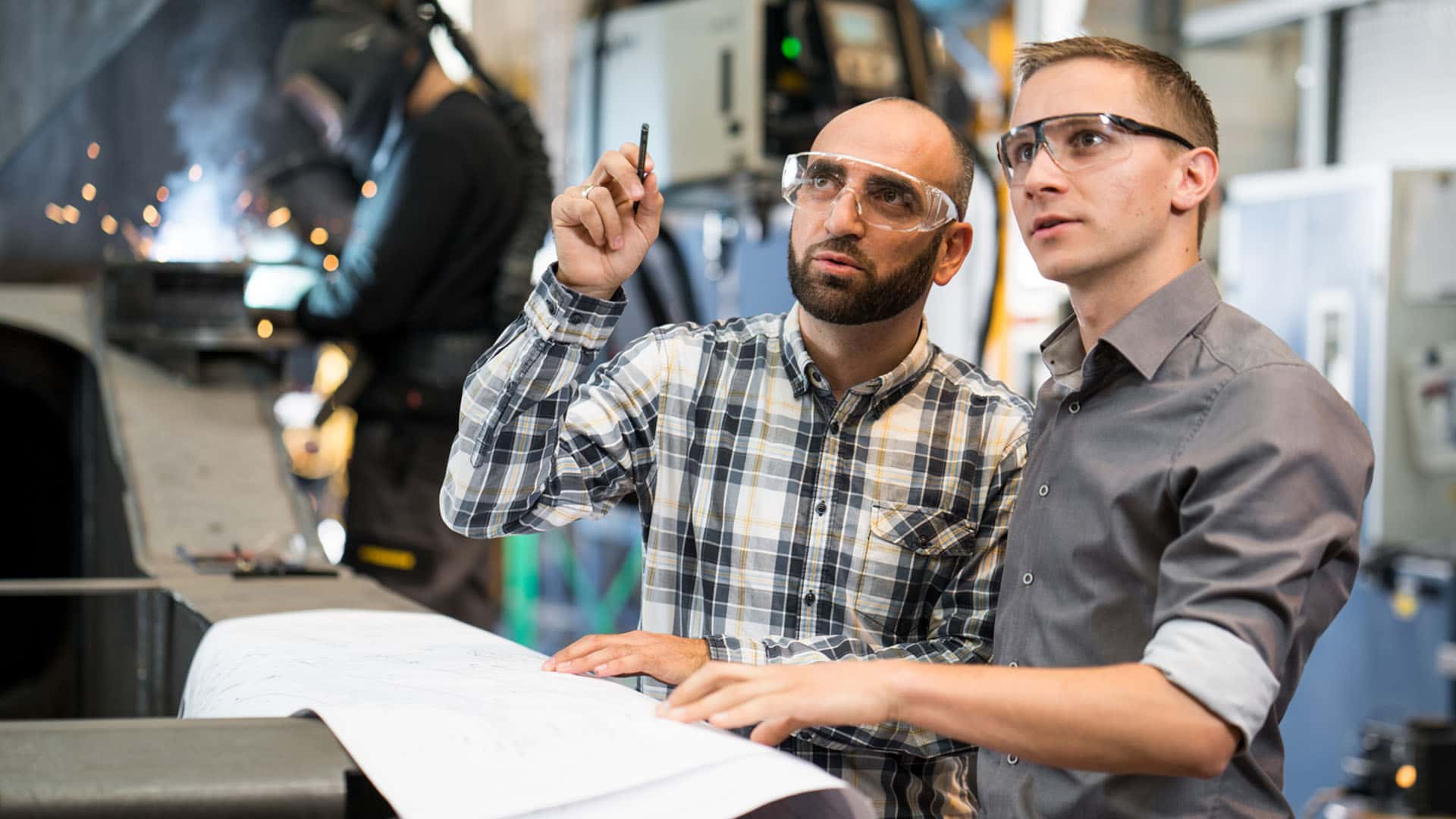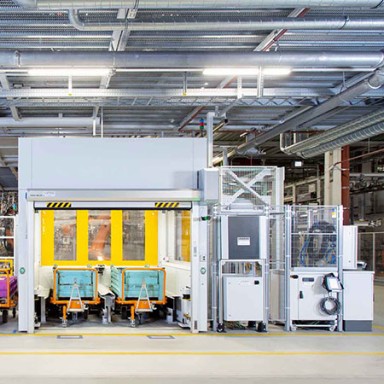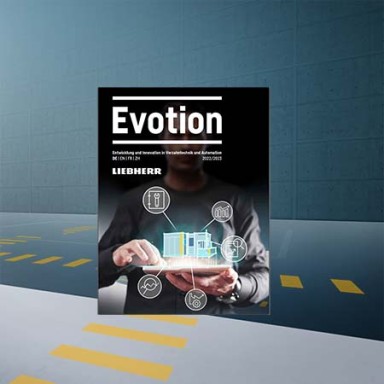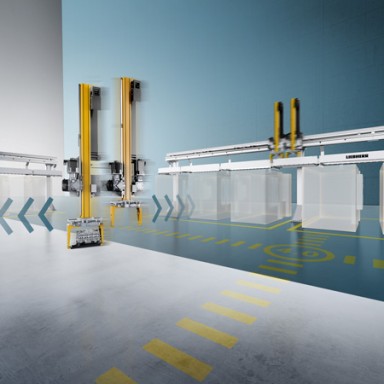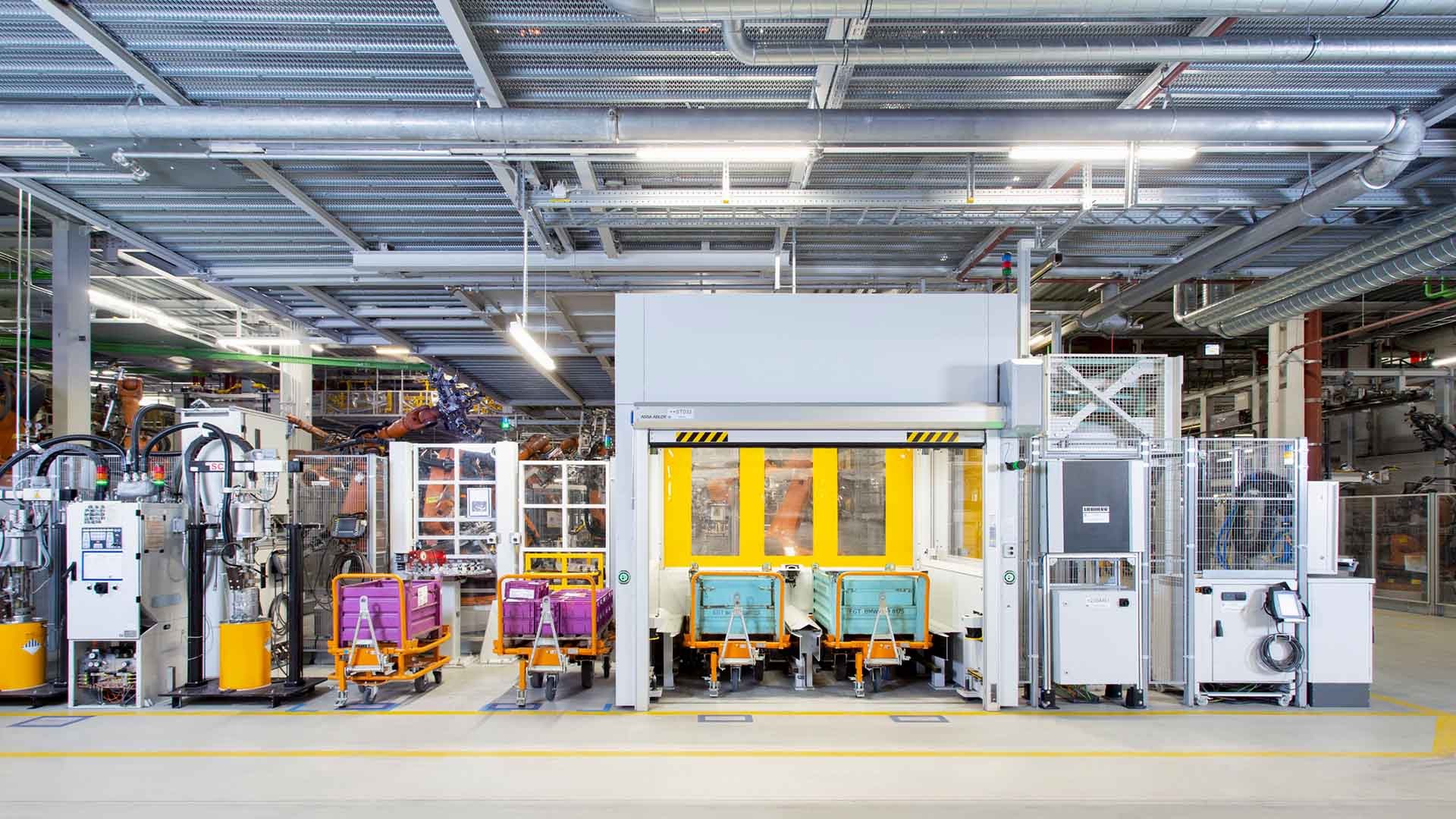
“Random bin picking” for feeding car body parts
Liebherr-Verzahntechnik GmbH supplied a complete robot cell for automated, flexible parts feeding as a bin picking solution for the line entrance of a body shop at the BMW Group‘s Dingolfing plant. The robot‘s task is to pick up the car body parts and feed them to the spot welding system – including double component recognition and high-precision intermediate storage area in a latch.
The BMW Group plant in Dingolfing is one of 31 BMW Group production sites worldwide and the Group’s largest European manufacturing facility. Around 18,000 employees ensure that around 1,500 automobiles roll off the production line at the plant every day. One of the models is the 4 Series convertible. To manufacture this, the BMW Group installed a new body shop in 2020.
Complete package for the line entrance
On the manufacturing line, side frame sheets are welded to reinforce the B-pillar. The parts feed for this needed to be flexibly automated with a bin picking solution. Liebherr-Verzahntechnik GmbH was able to really excel here by providing a complete solution for collision-free random bin picking for removal of the thin-walled parts: the robot cell at the line entrance includes the feed module with two high-speed gates, a gripper robot with three-point suction gripper, a latch storage system for the intermediate storage area, the user-friendly Liebherr software LHRobotics.Vision, and camera systems for component position control and double component detection.
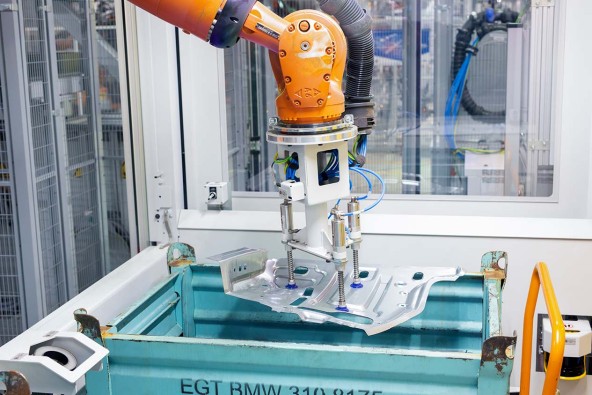
Collision-free removal of the panels with suction gripper
Design challenges
The automated line entrance has been in operation since 2020. The entire production area for the 4 Series Convertible was newly built by the BMW Group and had to run fully automated and reliably. The requirements were precisely defined: the parts had to be fed via a so-called tugger train, an industrial truck that delivers the components. The task of the software was to request new components from the logistics department in good time in order to ensure the unimpeded flow of production. The layout had to be compact and implemented in a relatively small space and within a small time frame. Customer specifications such as the interface to the BMW Group’s production control system had to be observed. Further challenges were the collision-free removal of the thin-walled body parts from the crate, as well as the detection of an additionally removed component (the so-called “stowaway”) and the integration of a latch storage as an intermediate buffer for the cycle-time-parallel loading of new crates.
Everything from a single source
The key factor in the award of the contract was that Liebherr, with its industrial application know-how and software expertise, was able to offer and implement the entire system design from a single source – from the initial design and construction through to on-site installation. The complete solution included feasibility analyses, gripper design and logic, integration into the company-specific plant control system, assembly and commissioning, and training of the operating personnel. In a package with the powerful, user-friendly LHRobotics. Vision software, the Liebherr solution therefore led the way in the benchmark comparison. “Unlike pure vision system providers, who often do not have the specific application in mind, we were able to secure feasibility. This is relatively rare on the market,” explains Eduard Lorenz, Liebherr’s bid engineer responsible for the project.
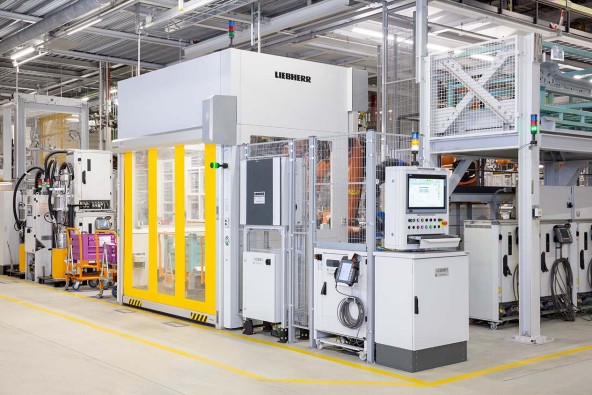
Liebherr automates the parts infeed for bodywork panels
Automated parts feeding
The components that the BMW Group produces in its own press shop are roughly positioned in large metal load carriers by tugger train. There, the 3D vision system first scans the position of the crate from above as well as the exact location of the body parts in the load carrier. Based on this scan, the robot removes the component from the load carrier using a flexible three-point suction pad and positions it with millimeter precision in the latch storage unit, which serves as an intermediate buffer.
Advantages of automation
From there, the robot feeds the component to the line. The random bin picking always alternates, for the left-hand and right-hand component respectively. If necessary, the robot is also able to deposit the component from the load carrier directly in the transfer station of the manufacturing line. The entire process for feeding a component from source to sink takes just over 20 seconds.
The advantage of automation is a constant cycle time, which is achieved by decoupling the line cycle and the process time of the bin picking operation. What’s more, it relieves the plant’s operating personnel of monotonous, unergonomic tasks and prevents the risk of injury from sharpedged components
Having completely set up and extensively tested the cell once in advance at our Kempten plant, we were able to set it up and commission it at the BMW Group plant within just three days.
Installation in record time
A particular challenge was the short time window for setting up and installing the system between two construction phases of the entire manufacturing line. “In order to be able to do this, we carried out a detailed feasibility analysis and extensive test series in advance. The accuracy of the deposit place in the latch storage was a particular issue,” reports Lorenz. “Having completely set up and extensively tested the cell once in advance at our Kempten plant, we were able to set it up and commission it at the BMW Group plant within just three days."
The integration of the BMW Group’s specific plant control system was also not a standard task. “But this is precisely our strength: the fact that, thanks to our expertise and the individual trials, we are even able to overcome challenges such as these” says Lorenz, explaining Liebherr’s approach – and not without a hint of pride.
Good cooperation
During the project phase, the cooperation between Liebherr and the BMW Group proved to be smooth and solution-oriented. Liebherr found well thought-out solutions for challenges such as integration into the control environment, the internal documentation of the BMW Group or even the more difficult conditions during the lockdown. “Both sides did their job,” says Lorenz summing up, and emphasizes: “that can’t be taken for granted everywhere either. The project team at the customer’s site always supported us well.”
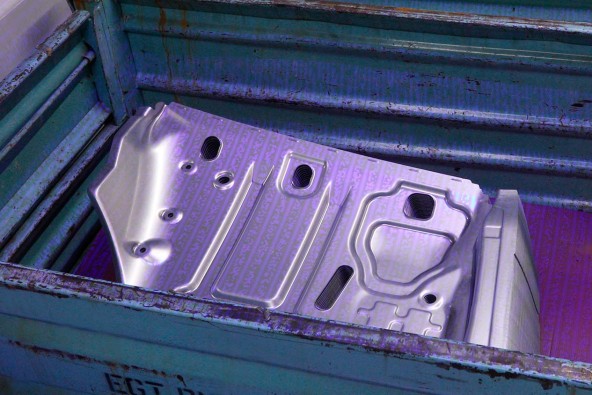
Camera scan to determine the position of the panels with 3D vision system
Partner with pioneering spirit
It was precisely because they were breaking new ground together in this case that Liebherr was able to successfully support the BMW Group. As Eduard Lorenz describes it: “A pioneering spirit was required here to integrate the bin-picking technology into the BMW Group’s standards and to perfectly coordinate the interfaces – and to do so until everything worked.” Physical proximity is also a plus point that comes into play, especially in such innovative projects. All things considered, not bad conditions at all for further joint projects


